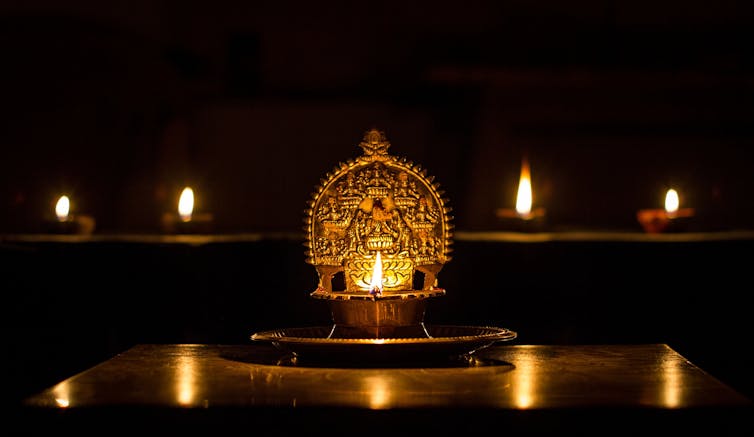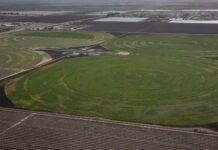Our prettiest pollutant: just how bad are fireworks for the environment?
Paul Brock Photography/Flickr, CC BY-NC-ND
Gary Fuller, King’s College London
Fireworks are great fun. We all enjoy guessing the colours of the rockets before they ignite in the sky, hearing the explosions echo off nearby buildings, or writing our names in light with hand sparklers.
But there is an environmental price to pay. Firework smoke is rich in tiny metal particles. These metals make firework colors, in much the same way as Victorian scientists identified chemicals by burning them in a Bunsen flame; blue from copper, red from strontium or lithium, and bright green or white from barium compounds.
There is more smoke from potassium and aluminium compounds, which are used to propel fireworks into the air. Perchlorates are also used as firework propellants; these are a family of very reactive chlorine and oxygen compounds, which were also used by NASA to boost space shuttles off the launch pad.
Terrific, but toxic
Fireworks can lead to substantial air pollution problems. There are well documented examples from cites around the world. In Spain, metal particle pollution from Girona’s Sant Joan fireworks fiesta can linger in the city for days. Across India’s cities, the annual Diwali fireworks cause pollution that is far worse than Beijing on a bad day.

Bonfire night.
Dan Shirley/Flickr, CC BY-NC-ND
Guy Fawkes is regularly the most polluted day of the year in the UK, although scientists from King’s College London have found that pollution from bonfires – the traditional way of marking Guy Fawkes – is also a part of this mixture. Fireworks can have significant effects on air pollution in enclosed spaces, too. In Germany, tests have shown how goal and match celebrations with flares, smoke bombs and other pyrotechnics can fill football stadiums with high concentrations of airborne particles.
And of course, what goes up has to come down. Fireworks that fall to the ground contain residues of unburnt propellants and colourants, while particle pollution in the air eventually deposits on the ground or gets washed out by rain. Some of this finds its way into lakes and rivers , where percolate has been linked to thyroid problems, causing limits to be set for drinking water in some US states. This is a major concern for lakeside resorts and attractions that have frequent firework displays.
Researchers in London have collected airborne particles from Diwali and Guy Fawkes. These were found to deplete lung defences far more than pollution from traffic sources, suggesting a greater toxicity. Across India, Diwali fireworks have been linked to a 30% to 40% increase in recorded breathing problems. Like New Year’s Eve, fireworks are a relatively new phenomenon at Diwali.

Premnath Thirumalaisamy/Flickr, CC BY
Traditionally, Diwali was celebrated with the lighting of ghee burning lamps – but this changed with the opening of India’s first firework factory in 1940. An Indian court petition is demanding better public safety information and restrictions on the sale and use of fireworks – but this came too late to limit the smog caused by this year’s celebrations.
Playing it safe
Some simple steps can be taken to reduce our exposure to firework pollution. For one thing, setting them off in enclosed spaces is a very bad idea, as are hand-held sparklers. Positioning crowds upwind of fireworks displays is another obvious way of reducing their negative health impacts.
Yet fireworks are already the largest manufactured source of some types of metal particles in the UK atmosphere. And the proportion of pollution from fireworks will only increase, as huge investments are made to reduce other sources of urban pollution. Particle filters are present on nearly all modern diesel vehicles and factory emissions across the developed world are continually being tightened – but firework pollution remains unchecked.
Perhaps the best way to tackle the pollution caused by fireworks is not to have them at all. But this seems rather extreme (not to mention a lot less fun). The high-precision, controlled displays that we see at international landmarks on New Year’s Eve demonstrate the great innovation of the fireworks industry. It’s time for this innovative approach to be applied to reduce the environmental impact of fireworks, so that we can continue to enjoy the excitement of displays for years to come.![]()
Gary Fuller, Senior Lecturer in Air Quality Measurement, King’s College London
This article is republished from The Conversation under a Creative Commons license. Read the original article.










